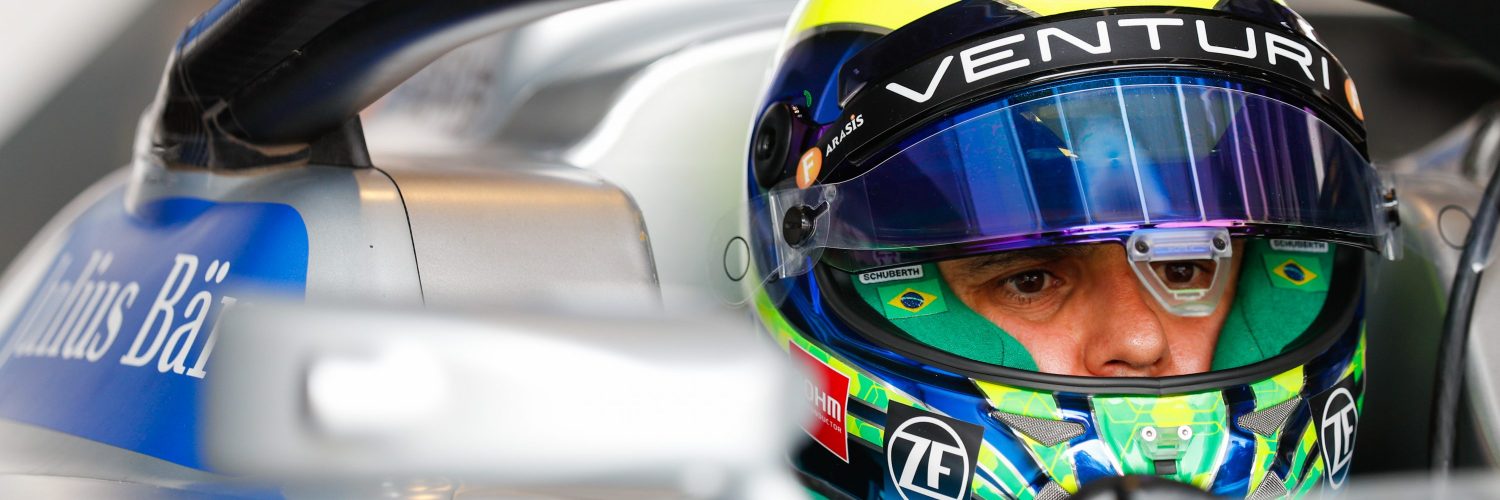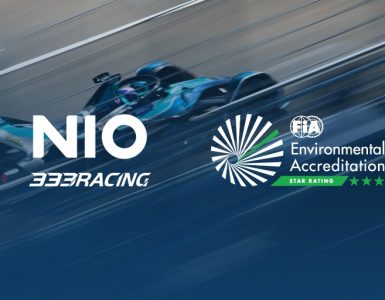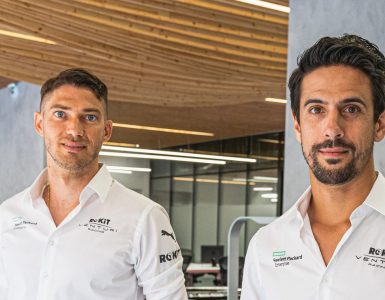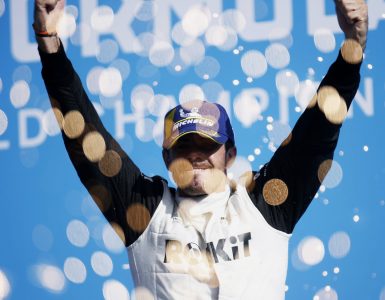With eight different winners from as many electric street races this season, Formula E in 2018/19 is turning into a real guessing game as to who wins next.
In winning a chaotic Paris e-Prix, Robin Frijns joined Mitch Evans, Antonio Felix da Costa, Jerome d’Ambrosio, Sam Bird, Lucas di Grassi, Edoardo Mortara and Jean-Eric Vergne as race victors. Three more different winners in the next two races and that’s half the field of 22 to have won!
There may be reasons for the unpredictability of the season, including qualifying format, homologation of chassis, closely-matched drivers and high propensity for crashes. Whatever the reason, it has made for compelling viewing.
Perhaps the driver who is most overdue a victory is DS TECHEETAH’s Andre Lotterer, the German finishing second in the last two races and cruelly denied victory in Hong Kong when hit by a flying Bird a lap from victory. After the weather-affected Paris e-Prix that even saw hail pelting the circuit and car chassis, Lotterer alluded to the fact that he rates Formula E as the toughest of tests. And that from someone boasting three Le Mans titles and a LMP1 World Endurance Championship.
“It’s difficult to win and difficult to drive,” Lotterer told Motorsport Tech in Monaco. “Many things come together. Obviously we all have the same cars and same exact battery and power output and range. So the difference is between the engine and inverter, preparation work, the software and a bit the car setup. But it’s super level because every team learned a lot in the first four seasons and, when the Gen2 cars came out, I think everyone was on a very similar level of efficiency. There may be one or two teams that are not up there, but otherwise everyone figured it out, so performance is super equal and all the drivers are very good.
'Formula E is the most difficult thing to drive' – @Andre_Lotterer explains why here 🗣#ABBFormulaE pic.twitter.com/a5gbBogseT
— ABB Formula E (@FIAFormulaE) April 28, 2019
“The reason why I think it’s the most difficult car to drive is because we’re still at the beginning of Formula E or electric motorsport history, I would say, and the cars are 900 kilos, which is not super light. And the tyres which Michelin brought are high performance, but obviously grooved tyres so we can race them in the wet and the dry so they move and don’t perform as well as slick tyres and we race on very tight tracks with different asphalt so when you hit the brakes it’s complicated and a lot of things happen.
“We have a bit of downforce but it’s not really essential to our performance so yes, put it all together and it’s a very manual car to drive. You go too early on the power, you lose the rear and touch the wall. So many random facts we have to adjust to makes it really difficult and there is no room for error. Every weekend is Monaco. The wall is always there. In other series you have a lot of downforce, very sticky tyres and a lot of space.
“And the qualifying format isn’t easy,” added Lotterer. “The championship leaders start in the first group when the track is not as good but no point crying about it. At least the contenders are all together in the same group and we only have two shots. One in free practice 1 and one in free practice 2 with extra power for the quali. To do the perfect lap is one of the most difficult things in Formula E, so no one is uber confident in Formula E.”
Reaction speed 💯 from @Andre_Lotterer 😮 #ABBFormulaE pic.twitter.com/f3NQc67lOl
— ABB Formula E (@FIAFormulaE) May 2, 2019
Lotterer is a driver rated by many as one of the greats of Endurance Sportscar Racing. But even so, Formula E offers a challenging learning curve for a man also driving for Rebellion Racing in the FIA World Endurance Championship.
“Once you have figured out Formula E, it’s okay to juggle series, I think. It’s just about being more confident and to completely relearn the environment and all the random facts and play with them. And build it up, because you don’t want to miss a corner and hit the wall, crash the car. So, I wanted to take my time a bit and know what I’m doing, especially on the brakes, see how confident you are to brake late and still make it.
“Then, behind the wheel, actually it’s quite fun because it’s not like a high downforce car where if you don’t have the right set-up and are just understeering, your hands are completely tied. Here, if you don’t have the perfect setup, there’s always something you can do behind the wheel. You can try and brake a bit more, be more aggressive, play with the throttle. It’s very, let’s say, Rally or Touring Car type of driving. So that’s quite fun, actually.”
Perhaps a driver who has a right to be slightly more confident than others around Monaco is fellow local resident and Formula One veteran Felipe Massa. The Venturi Formula E team driver spent 15 seasons blasting around Monte Carlo’s tight confines and has also finished on the podium more than once at the highest level of all.
Even for someone who has achieved so much, winning in Formula E would represent a big scalp.
“I’m very excited,” Massa told Motorsport Tech. “You know Monaco is always Monaco. It’s always a fantastic feeling to race here, to be around the race track, the atmosphere. It’s also exciting for me because I don’t know maybe two corners but I know all of the other corners compered to all of the other races I’m doing so this is positive feeling. I’m also racing at home, I live here. So it takes two minutes to get from my apartment to the race track.”
Home comforts for Massa there may be, but the humble Brazilian is the first to admit that there is no magic bullet to winning in this most unpredictable of series.
Nothing beats going flat out between the Monte Carlo barriers! 🇲🇨
We.
Cannot.
Wait! 😆#MadeInMonaco #ABBFormulaE #MonacoEPrixpic.twitter.com/R1pG3Zv7f4— VENTURI Formula E Team (@VenturiFE) May 10, 2019
“We have almost half of the grid who didn’t win, a bit less than half has won. The most incredible thing is the different nationalities as well and maybe different teams, not even one team has won twice. It shows how competitive Formula E is. It’s amazing. You cannot see these kind of results happening compared to the other championships. There’s not even one second from the first to the last, so it shows that everybody has a chance or a possibility.
“It’s so many things. First of all, the chassis are the same but they have some open regulations that you can see some difference like maybe the drive train, also little things on the suspension, on the rear part of the car. Software in Formula E is as important as aerodynamics in Formula One, so you need to do a good job on that as well. But, city tracks and also the qualifying format is very important because the top six in the championship is always in the first group, so maybe the track isn’t at the best condition. When you put all of these things together, it shows why it’s so competitive.”
🙌 @MassaFelipe19#MadeInMonaco #MonacoEPrix #ABBFormulaEpic.twitter.com/DdLiOZBNqg
— VENTURI Formula E Team (@VenturiFE) May 15, 2019
Like Lotterer, Massa admits he has had to work hard to adapt to the demands of the premier electric racing series and has also adapted his style of driving.
“I’ve had to change a lot,” added Massa. “The mentality, the way of driving, everything is different. Also, I don’t know any tracks! Monaco is a track that I know more. You need to understand how to save the battery in a good way but also not losing the pace because saving the battery is easy but then you need to go slower. Into the braking zone, using the paddles, trying to use the regen at the right time, not losing the apex even if you are arriving much slower. So you have so many tricks to learn that experience makes a big effect. Plus knowing the tracks, qualifying only one lap with more power just for that lapis quite tricky. So experience is a big bonus.”
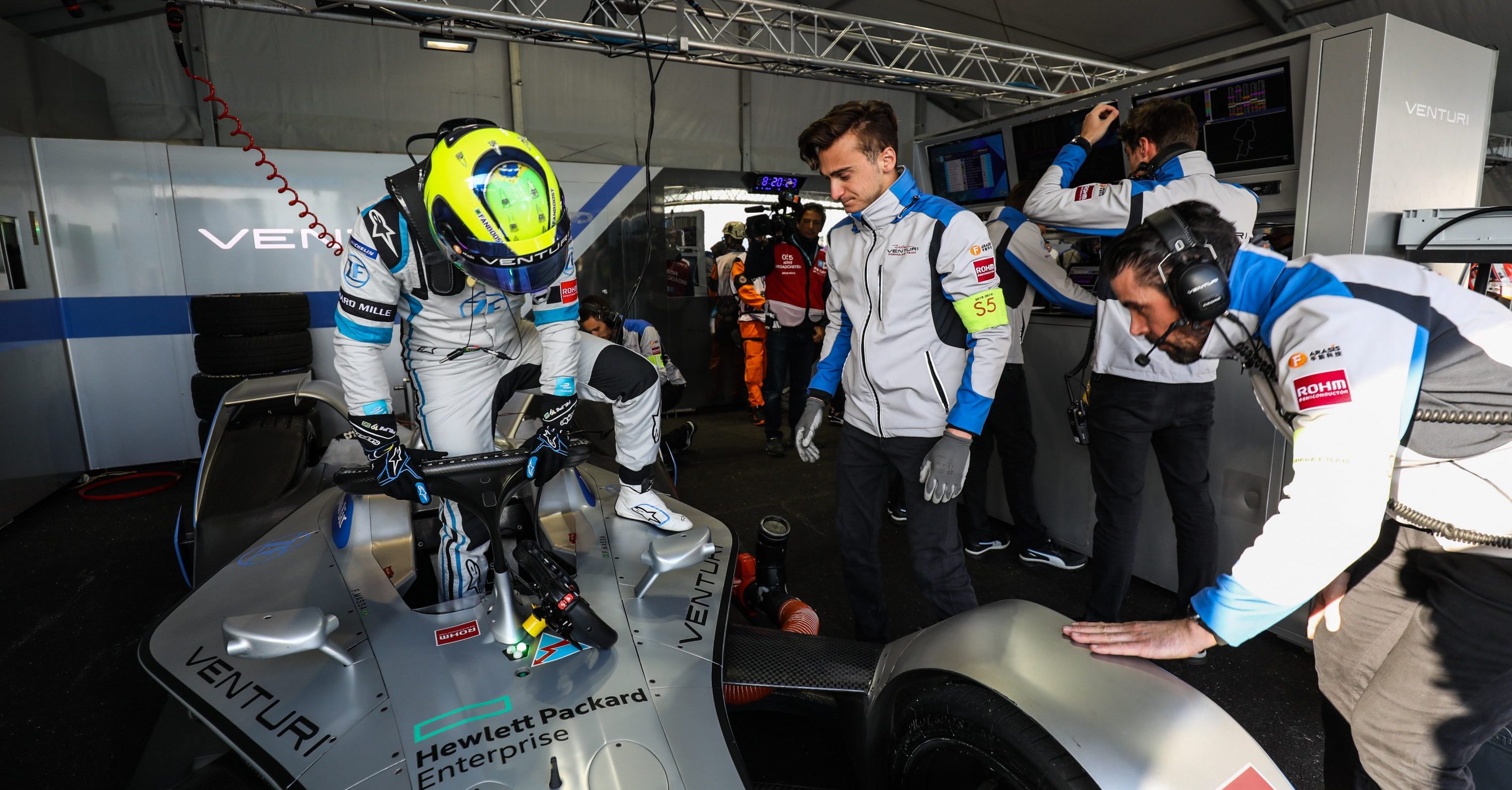
Considering everything both Massa and Lotterer have to say about the huge demands of driving in Formula E, maybe there is a bigger chance of there being a repeat winner this weekend.
If even the best in the world haven’t stood atop the podium this year, perhaps it really is one of the biggest tests in motorsport.

